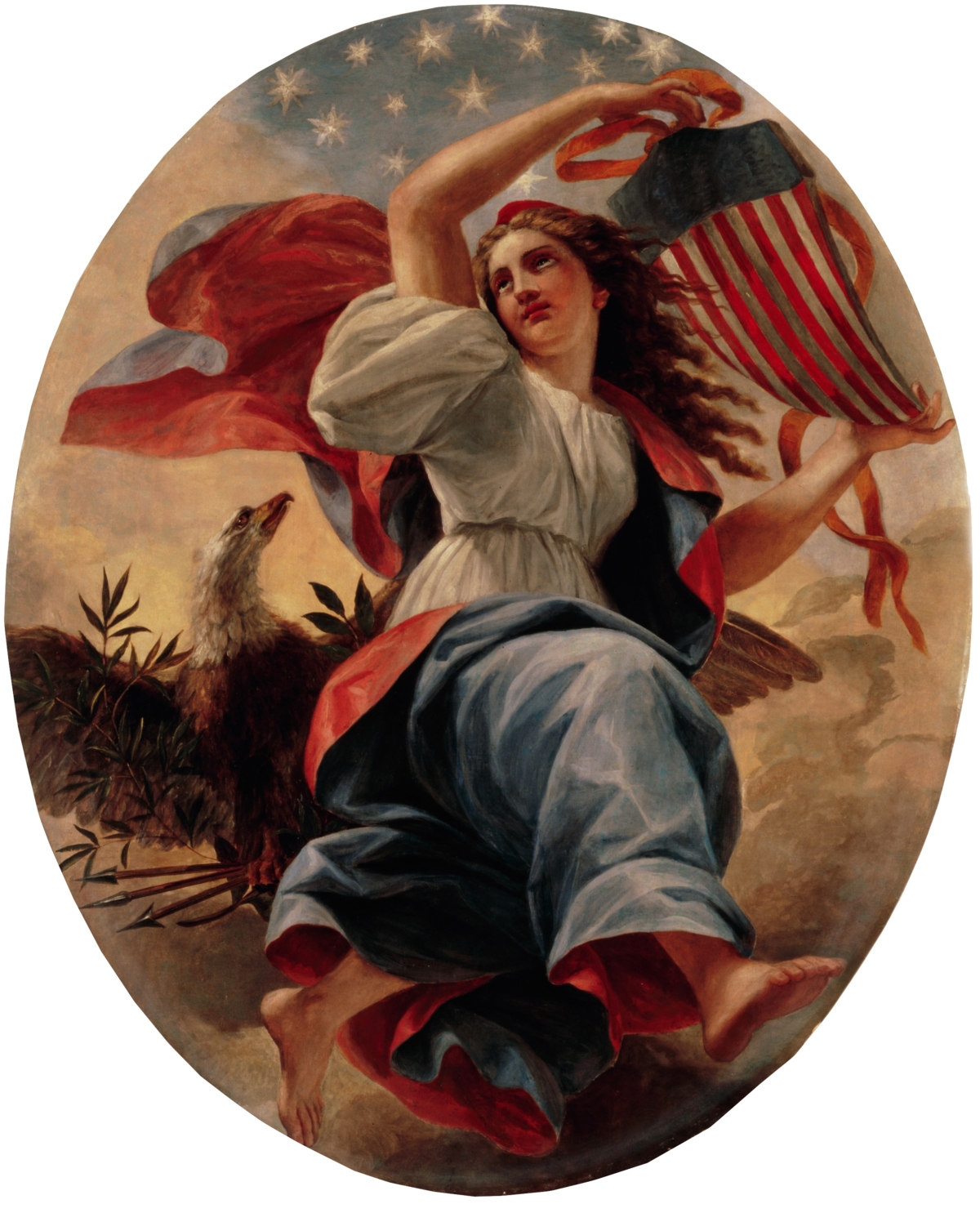In the aftermath of the Civil War, President Ulysses S. Grant commissioned a set of paintings representing Liberty and Union
To celebrate the glory of the nation, “The Genius of America,” circa 1868, was painted by French artist Adolphe Yvon during the aftermath of the Civil War. Oil on canvas. Saint Louis Art Museum, Missouri. (Public Domain)
When Ulysses S. Grant entered the president’s office in 1869, echoes of the Civil War tensions that he helped to resolve still reverberated in his mind—and in the nation at large. In response, he commissioned a set of paintings to represent the Union’s indivisibility and to symbolize the nation’s post-war recovery.
“Liberty” by Constantino Brumidi is mounted on the ceiling of the White House entrance hall. White House Historical Association. (Public Domain)
The two paintings depict allegorical renderings of Liberty and Union, respectively, and were painted in the aesthetic style of 16th-century Venetian ceiling paintings, by Italian American artist Constantino Brumidi. He was a classically trained artist and immigrant who painted a number of United States Capitol murals.
 “Union” by Constantino Brumidi. It is mounted on the ceiling of the White House entrance hall. White House Historical Association. (Public Domain)
“Union” by Constantino Brumidi. It is mounted on the ceiling of the White House entrance hall. White House Historical Association. (Public Domain)
The first of the paintings, “Liberty,” is depicted holding aloft a laurel wreath, representing victory. She wears a crown of golden stars, which symbolizes America’s original states. In “Union,” the American flag is personified as a young woman clothed in white, red, and blue and donning a Phrygian cap, also known as a liberty cap. The painting is littered with symbols of the Great Seal of the United States, such as in the shield that Union holds aloft, adorned with 13 red stripes; and an olive branch and arrows clutched by a bald eagle.
This article was originally published in American Essence magazine.

 “Liberty” by Constantino Brumidi is mounted on the ceiling of the White House entrance hall. White House Historical Association. (Public Domain)
“Liberty” by Constantino Brumidi is mounted on the ceiling of the White House entrance hall. White House Historical Association. (Public Domain)